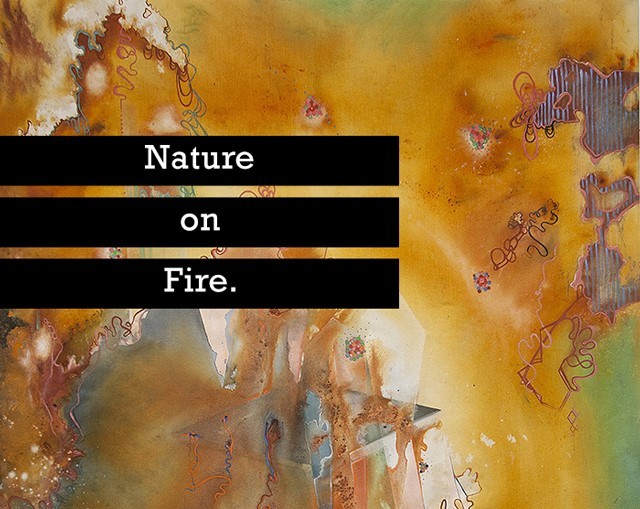Explosive design and blazing colors illuminate the canvas in artist Lauren Coulson’s new body of work. With furious energy and dazzling form, her work contains imagery from nature and the physical world. From the dirt under our feet to the depths of the cosmos, Lauren Coulson wants us to take a step back and reexamine the natural world.
As a graduate student of the School of the Museum of Fine Arts, Lauren Coulson lives and works in the Boston area. During an interview at her studio, she describes her process and some sources of inspiration for her latest series of paintings.
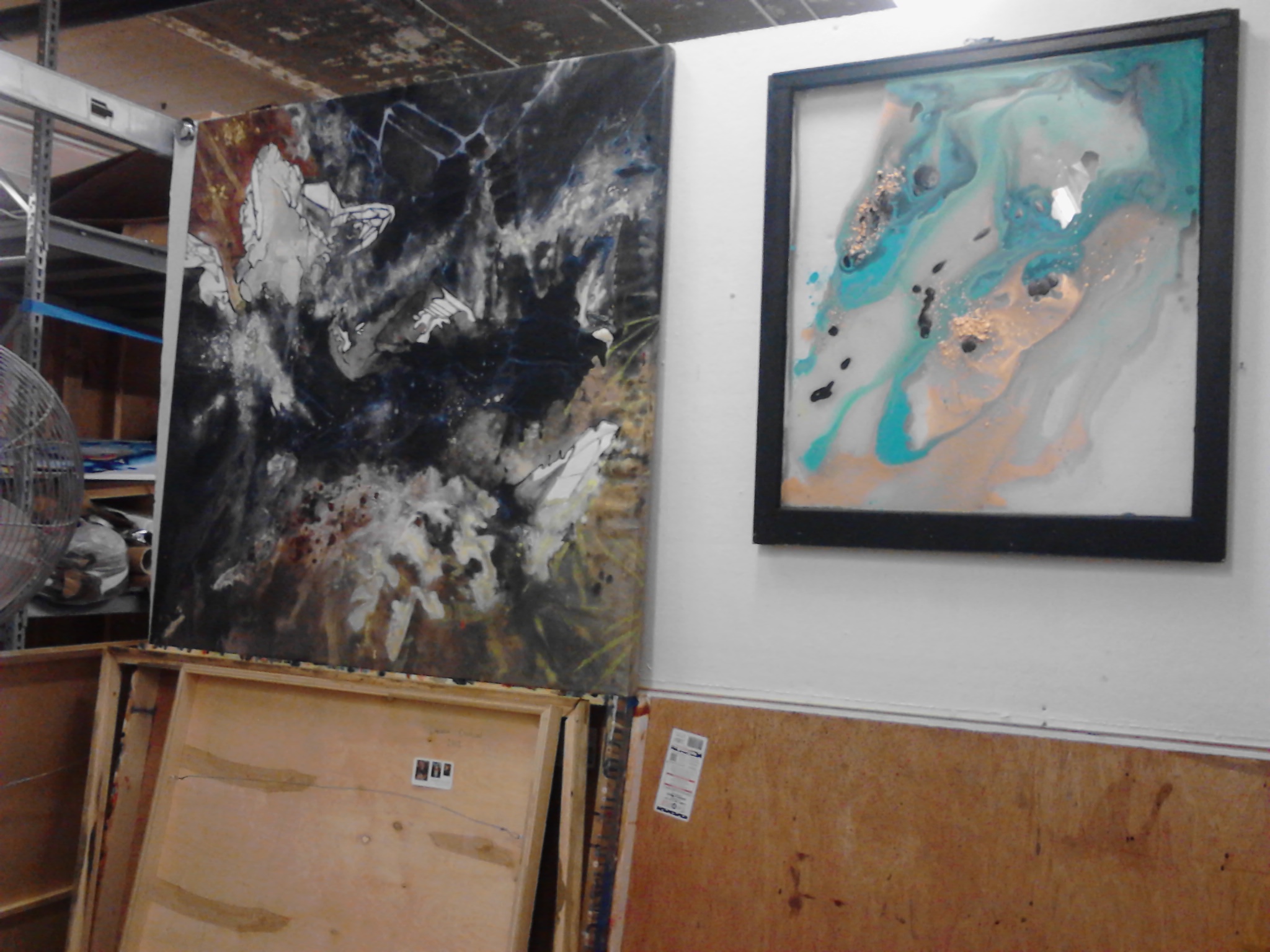
Steven Briggs/Quiet Lunch Magazine.
STEVEN: “How does your process affect the meaning of your work?”
LAUREN: “I start off with spills and stains. As I work, fractals start coming. I draw inspiration from nature, there are all these little things that repeat as they spread. It’s forming right in front of my eyes and I think that’s beautiful. I wouldn’t be able to get that natural effect if I were doing it any other way. Once it’s dry I can assist with it, like bring it out and make it pop. When it spreads, it’s almost in a violent way, but small and microscopic. There’s a conversation with the macro and the micro. Something on the macro scale you can also see on the micro scale. You can see little breaks and creases.”
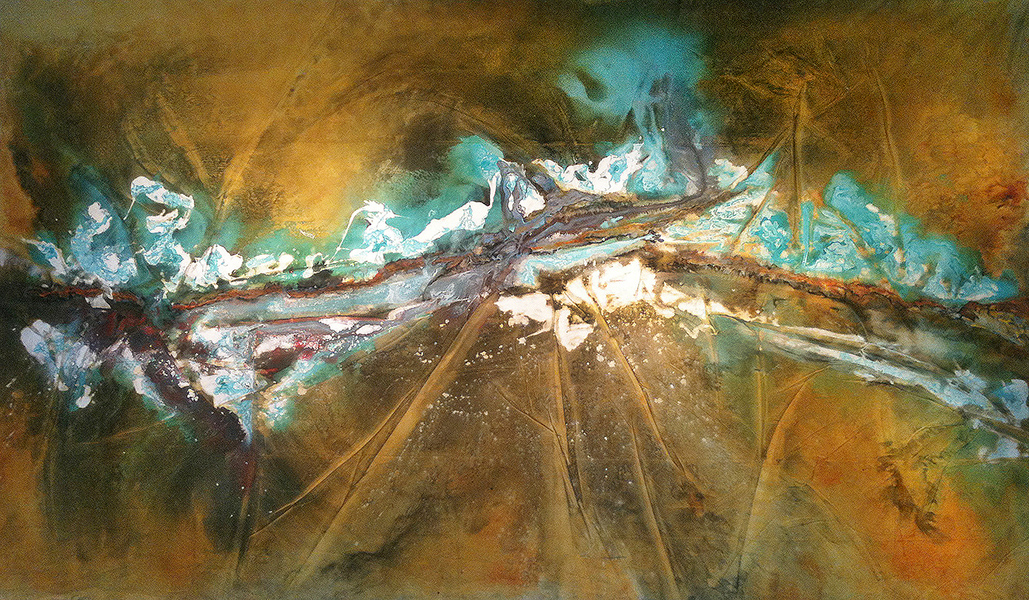
Fault Line, acrylic, ink and dye on canvas, 120″ x 210″, 2013. (Steven Briggs/Quiet Lunch Magazine)
STEVEN: “So the paint pours onto the canvas and you see how it interacts with each other?”
LAUREN: “There’s a chemical reaction. There are different viscosity levels of the paint, so when I use a thicker paint and mix it with ink or dye; you can see how it reacts with each other. You can see little tiny rivers that form. It’s a beautiful process. I start off with a wet canvas. When I pour paint on to it, it literally just spreads. The way it reacts and dries, I’m more in awe of it than anything else. And then once it’s dry, I say damn. What am I going to do to it now?”
STEVEN: “Do you feel like you have less control in your process?”
LAUREN: “You don’t have control of anything. You just have this idea of what it’s going to look like. From start to finish, it’s stressful and it’s frustrating, but then I look at it and I think that’s gorgeous. It’s like capturing all these happenings, things that people would normally look over. When you actually focus on it, it’s mesmerizing.”
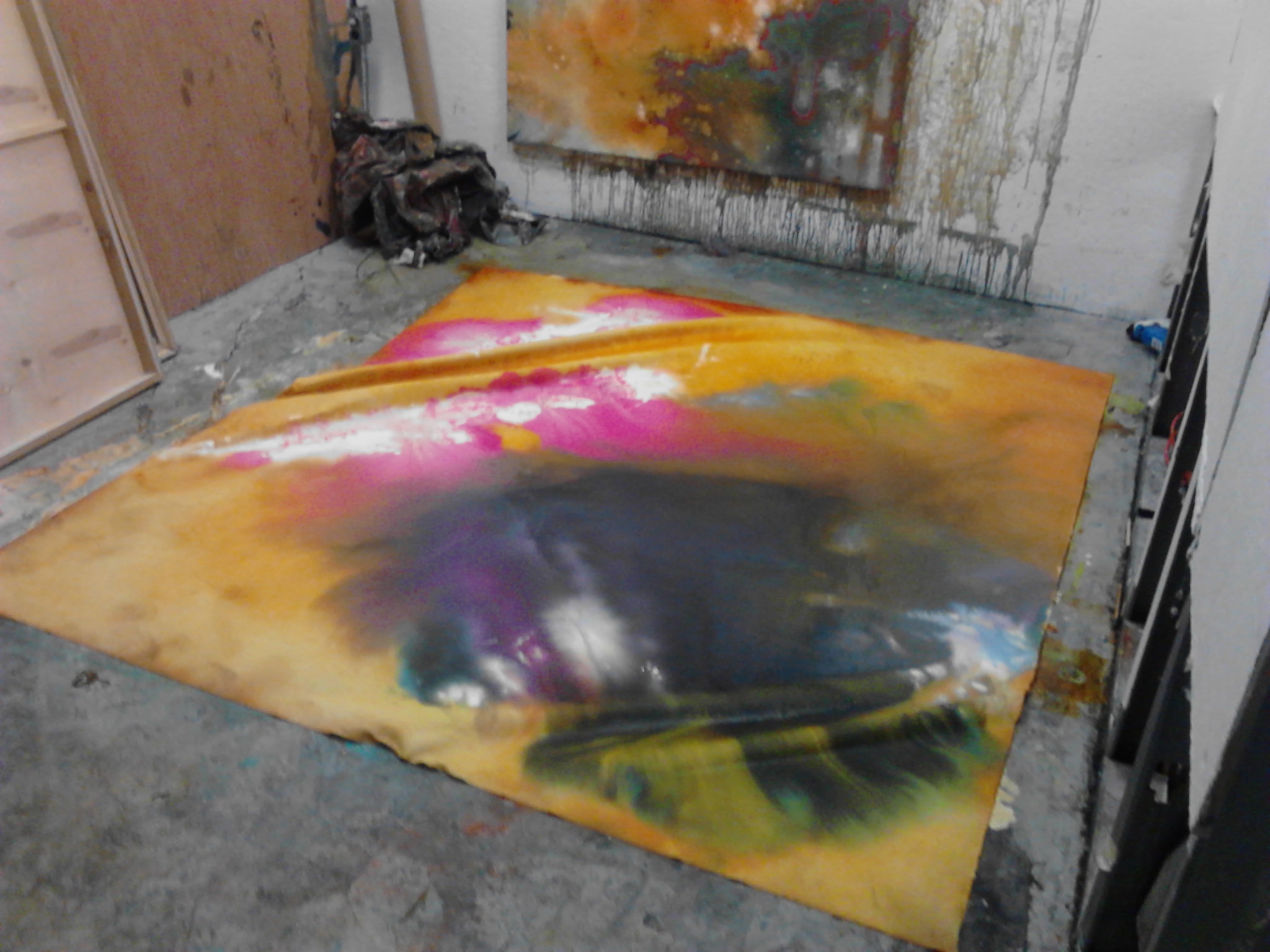
Steven Briggs/Quiet Lunch Magazine.

Steven Briggs/Quiet Lunch Magazine.
STEVEN: “How has the idea of opposite forces influenced your work?”
LAUREN: “I would take my piece Collision as an example. I pull both sides of the canvas up on the corner and let the paint drip towards the center. It has this violent look to it, but it’s also beautiful. Like fire, the painting can be both gorgeous and destructive.”
STEVEN: “Do you place more importance on the final images or the meaning behind them?”
LAUREN: “Final images. I’m not into political art or performance art. Whether it’s materialistic or not, I place a lot of importance on what the image looks like in the end. I need something physical out of it. The meaning can be brought out after the piece is done. I want something I want to look at.”
STEVEN: “How does science affect your art? Do you find it difficult to combine the two?”
LAUREN: “It is difficult. I can’t even have a whole conversation about science. As a child, geology has always been a huge fascination of mine, formations and the shape of the molecule to form a stone, the chemistry of the pigment, viscosity, and gravity. I wouldn’t be able to work if I didn’t have that inspiration.”
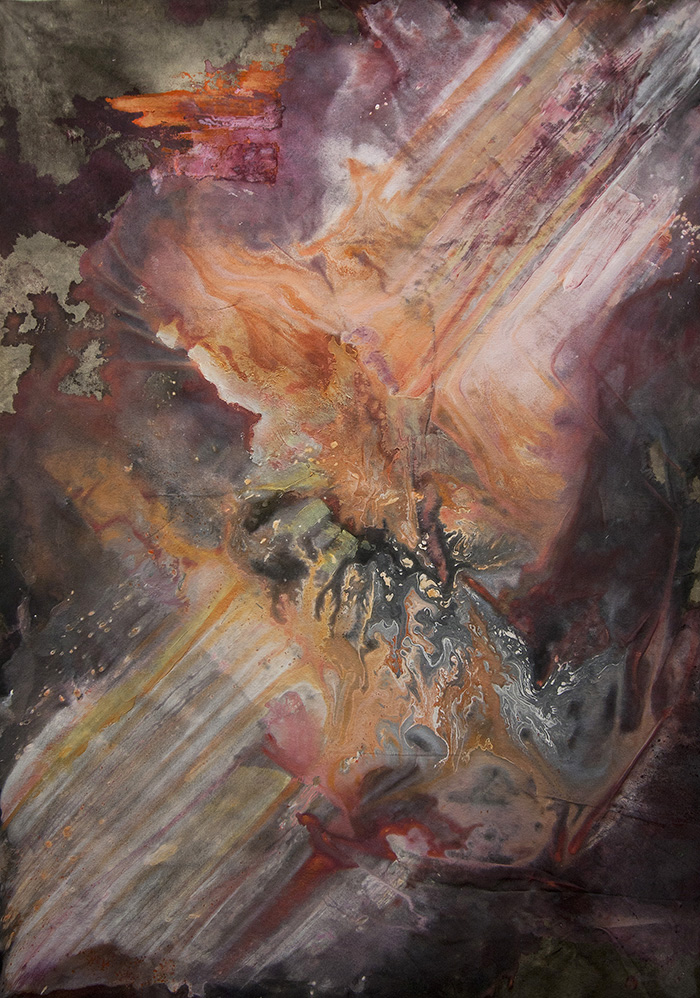
Collision, oil, acrylic, ink and studio soot on canvas, 75″ x 53″, 2013. (Steven Briggs/Quiet Lunch Magazine.)
STEVEN: “Is there any academic research involved in your work?”
LAUREN: “I do research. Lots of images like fissures, natural chaotic happenings, on earth or in the cosmos. I am interested in why things are so violent and eventually erupt. These violent and beautiful things will happen like destruction after creation or creation after destruction.”
STEVEN: “What artists do you find most influential?”
LAUREN: “I find German artists to be most inspirational. Gerhard Richter. Sigmar Polke. Some people say that my work would sell really well in Germany.”
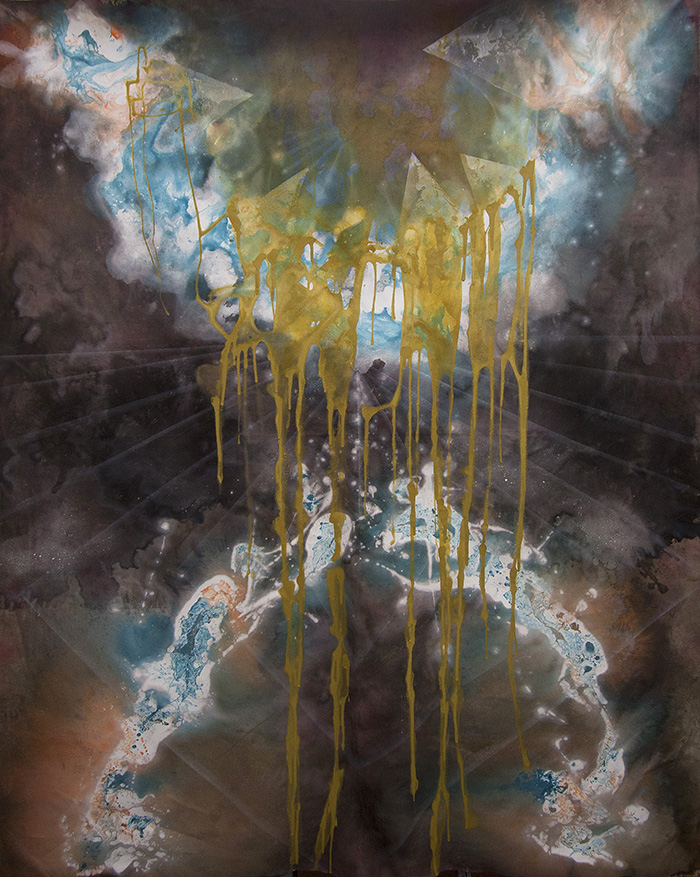
Cosmic Filth, oil, acrylic and ink on canvas, 84″ x 60″, 2013. (Steven Briggs/Quiet Lunch Magazine.)
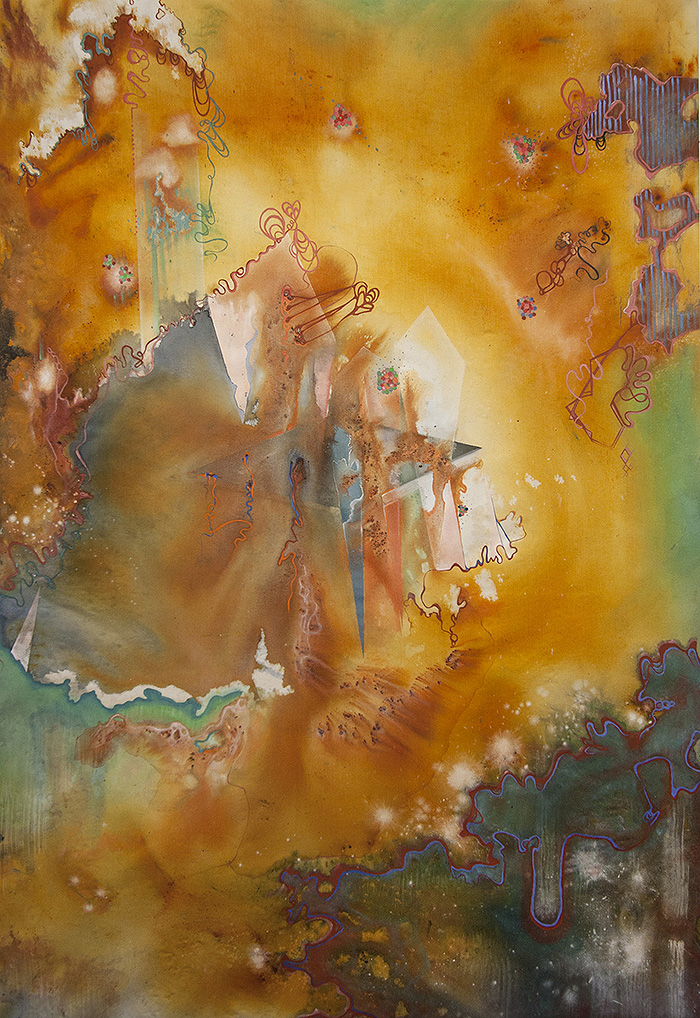
Stellar Dream, oil, acrylic and dye on canvas, 75″ x 53″, 2013. (Steven Briggs/Quiet Lunch Magazine.)
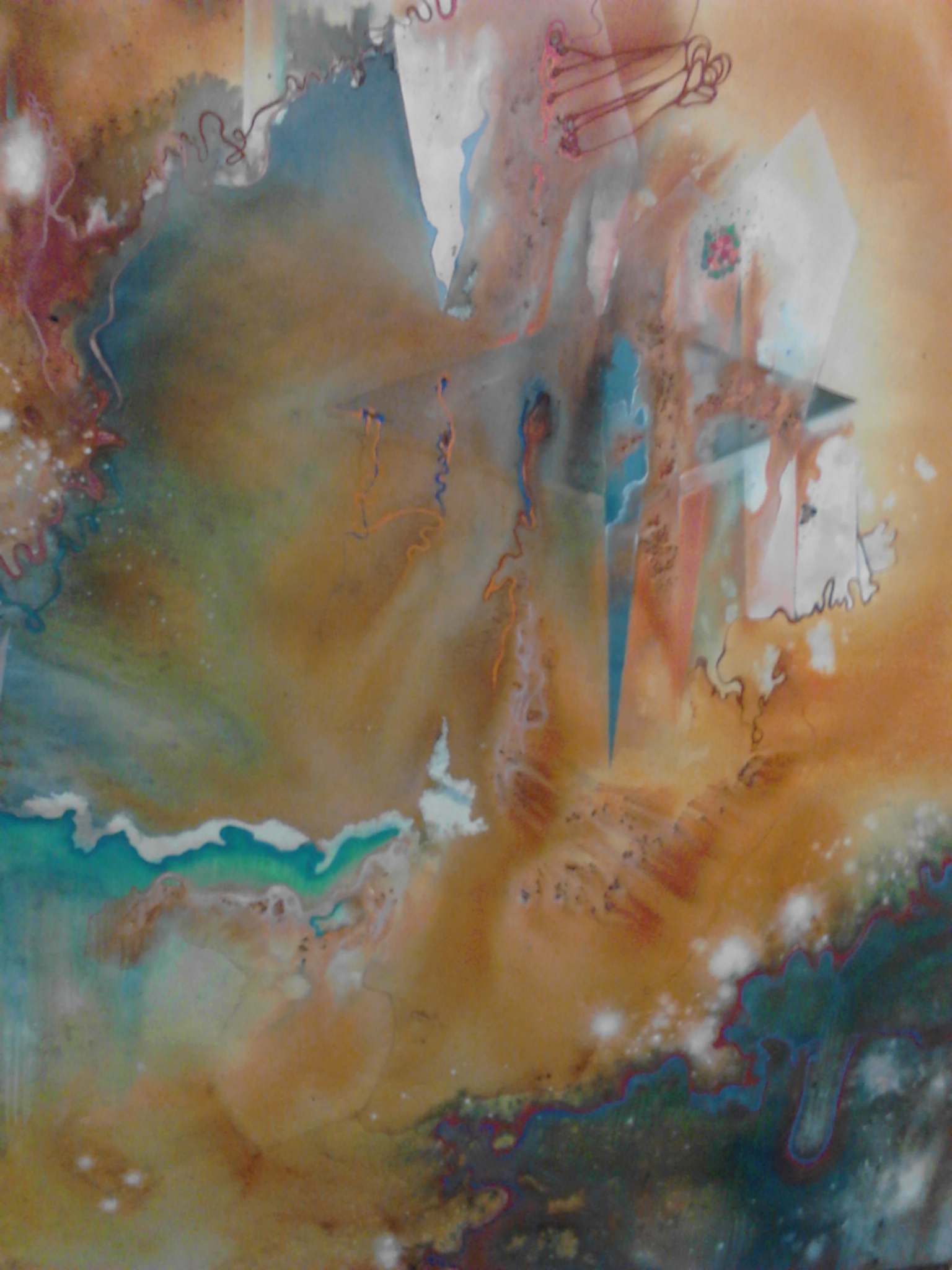
Steven Briggs/Quiet Lunch Magazine.
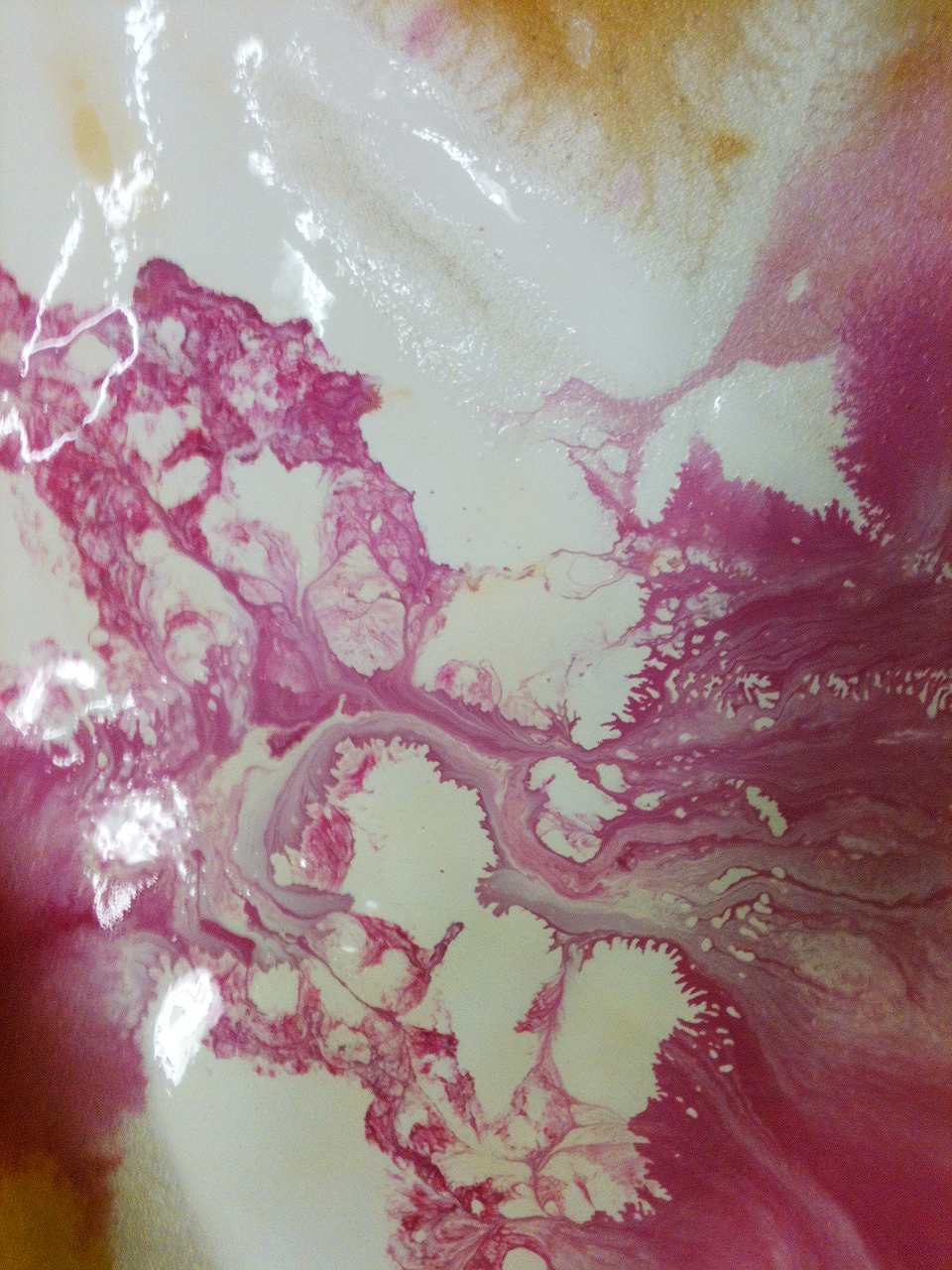
Steven Briggs/Quiet Lunch Magazine.

